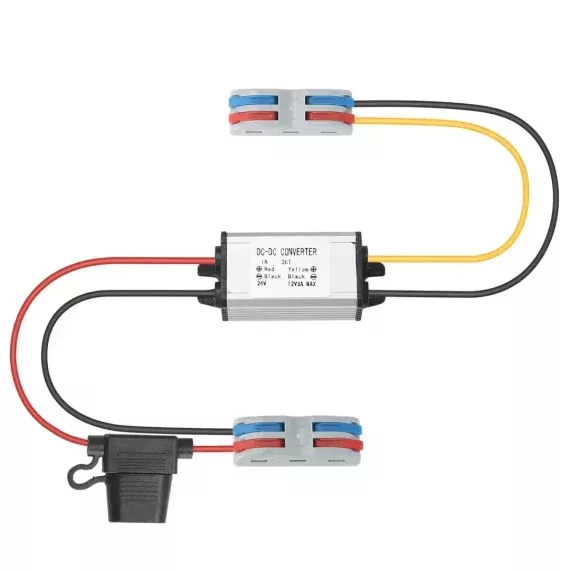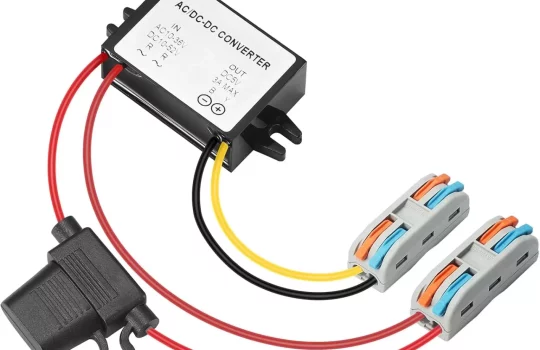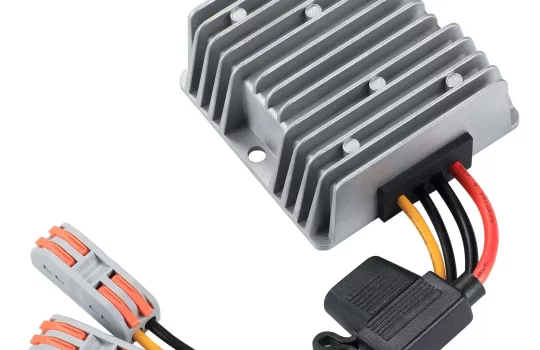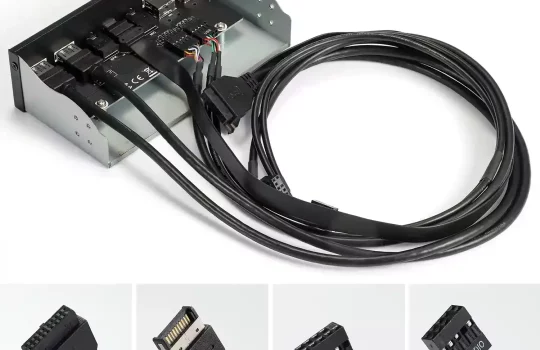When a device designed for 12V DC operation is powered by a DC 24V source, direct connection risks overheating, malfunction, or permanent damage. Effective voltage reduction must maintain stability, efficiency, and protection against electrical noise or spikes.
Common Methods to Step Down 24V DC to 12V DC
- Using a DC-DC Buck Converter
A buck converter is one of the most efficient methods for stepping down DC voltage. It uses high-frequency switching and energy storage components like inductors and capacitors to lower the input voltage to a stable, regulated output.
Key Features:
- High efficiency, often above 85%
- Minimal heat generation compared to linear regulators
- Adjustable output voltage models available
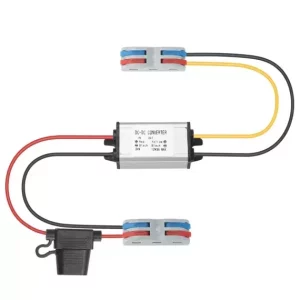
Typical Circuit:
- Input 24V DC into the converter
- Adjust the potentiometer (if present) to set the output voltage to exactly 12V
- Connect the 12V output to the load
Applications:
- Automotive electronics
- Industrial control systems
- Battery-powered devices
- Using a Linear Voltage Regulator (e.g., LM7812)
Linear regulators offer simplicity and low noise output but are less efficient, especially when the voltage difference between input and output is significant.
Key Features:
- Easy to implement
- Provides clean and stable 12V output
- Requires proper heat sinking for higher currents
Typical Circuit:
- Input 24V DC to the Vin pin of the LM7812
- Connect the GND pin to ground
- Receive 12V DC from the Vout pin
- Add input and output capacitors (typically 0.33µF and 0.1µF) to enhance stability
Drawbacks:
- Significant power loss as heat
- Not suitable for high-current applications without substantial thermal management
- Voltage Divider (Only for Low-Current Applications)
A resistor-based voltage divider can step down voltage for very low-power circuits where precision and stability are not critical.
Formula:
Vout=Vin×R2R1+R2V_{out} = V_{in} \times \frac{R2}{R1 + R2}
where R1R1 and R2R2 are two series resistors.
Example Calculation:
- For 24V down to 12V, use two equal resistors (e.g., two 10kΩ resistors).
Limitations:
- Output voltage varies with load
- Not suitable for powering devices that draw variable or significant current
- Best for reference voltages or input signals, not powering devices
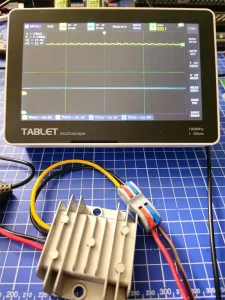
- Zener Diode Regulation (Simple but Crude)
Using a Zener diode in parallel with the load can clamp the voltage to 12V. A series resistor is needed to limit current.
Typical Circuit:
- Series resistor connected between 24V source and load
- 12V Zener diode connected across the load
- Resistor value determined based on the expected load current
Limitations:
- Poor regulation under varying load
- Significant power wasted in resistor and diode
- Suitable for low-current, non-critical applications only
Practical Considerations
Power Dissipation and Heat Management
When using linear regulators or resistive methods, excess energy is converted to heat. Estimating the heat generated helps in choosing the right heat sink or cooling strategy.
Formula:
P=(Vin−Vout)×IloadP
where PP is power in watts, VinV_{in} is input voltage, VoutV_{out} is output voltage, and IloadI_{load} is current.
Example: If a device draws 1A, then:
P=(24V−12V)×1A=12WP =12W
This 12W must be dissipated, which requires a sizable heat sink or active cooling.
Current Requirements
The choice of method depends heavily on how much current the 12V load requires:
- Small current (mA range): Resistor divider or Zener diode methods may suffice.
- Medium current (hundreds of mA): Linear regulators with good heat sinking are acceptable.
- Large current (amps): Buck converters are necessary to avoid excessive heat and inefficiency.
Protecting the Load
Incorporating protection features enhances the reliability of the voltage reduction system:
- Input Fuses: Protect against overcurrent.
- TVS Diodes: Guard against voltage spikes.
- Reverse Polarity Protection: Prevent damage if the supply wires are accidentally reversed.
Noise and Stability
Switch-mode converters can introduce high-frequency noise into sensitive circuits. Proper filtering with capacitors and inductors minimizes these effects. Linear regulators, in contrast, offer clean output but at the cost of lower efficiency.
Ready-to-Use Modules vs. Custom Design
Many off-the-shelf modules are available that can efficiently step down 24V to 12V. For example:
- LM2596-based buck converter boards
- Adjustable switching regulator modules with digital displays
- High-power DC-DC converters rated for industrial use
Building a custom circuit offers learning opportunities and complete control over specifications but requires careful component selection, PCB layout considerations, and testing.
Reducing 24V DC to 12V DC can be achieved through multiple methods, each suited to different application requirements. Buck converters offer high efficiency and flexibility, making them ideal for most practical uses. Linear regulators provide simplicity and low noise at the cost of efficiency, while resistive dividers and Zener diode circuits are suitable only for low-power or non-critical tasks. Careful assessment of current demand, thermal management, and protection requirements ensures a stable and reliable 12V output, safeguarding connected devices and enhancing system performance.

